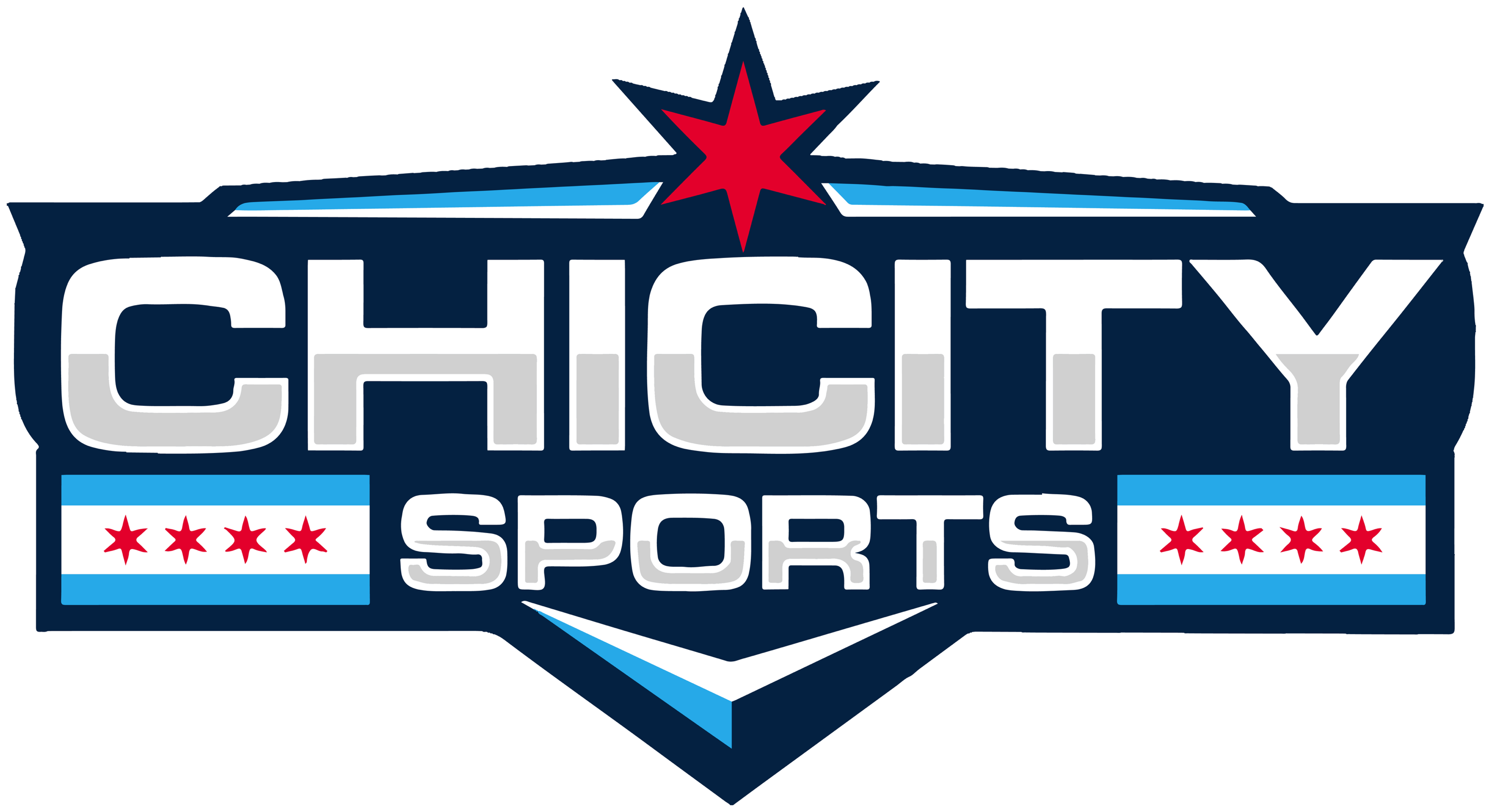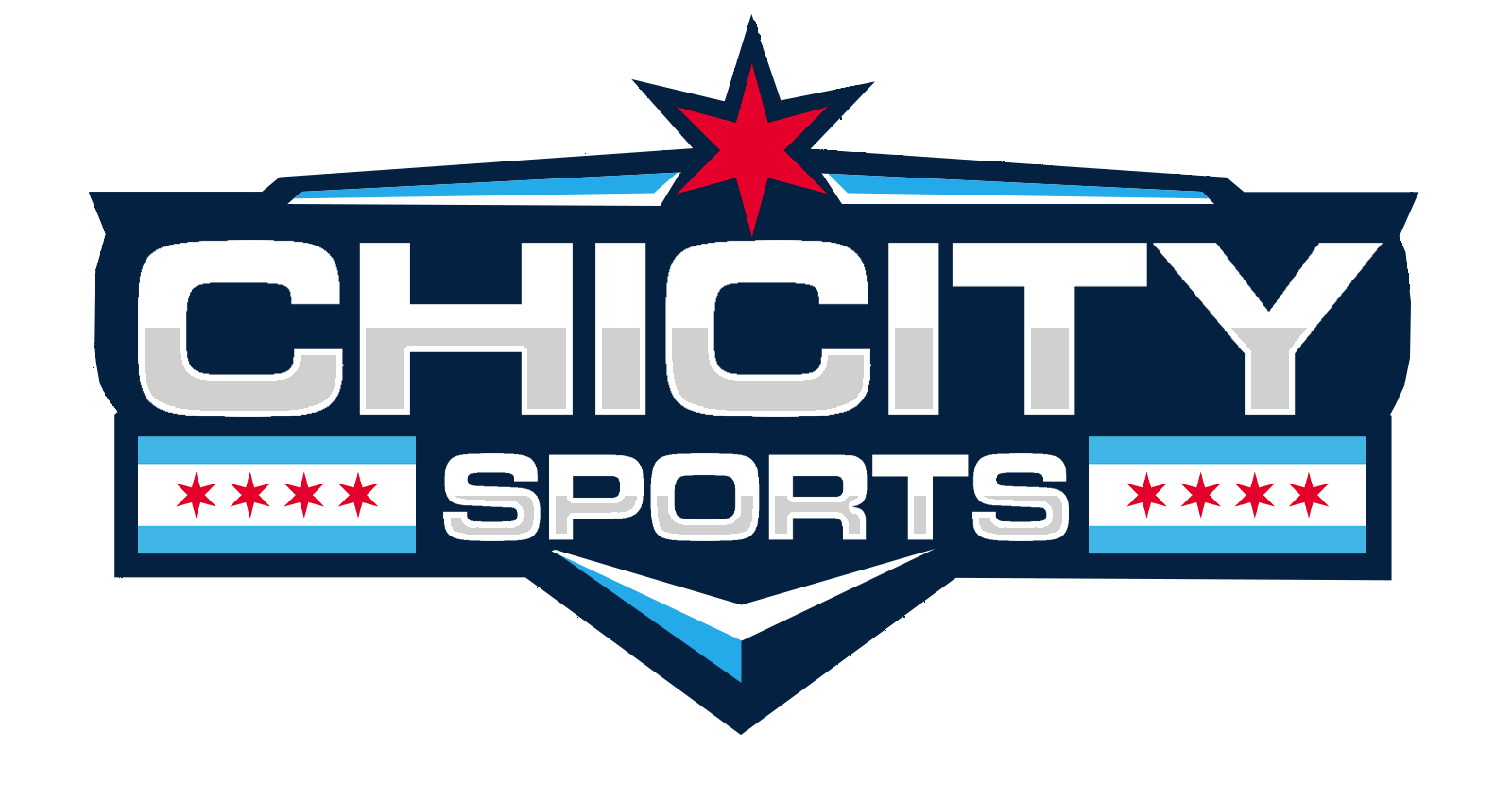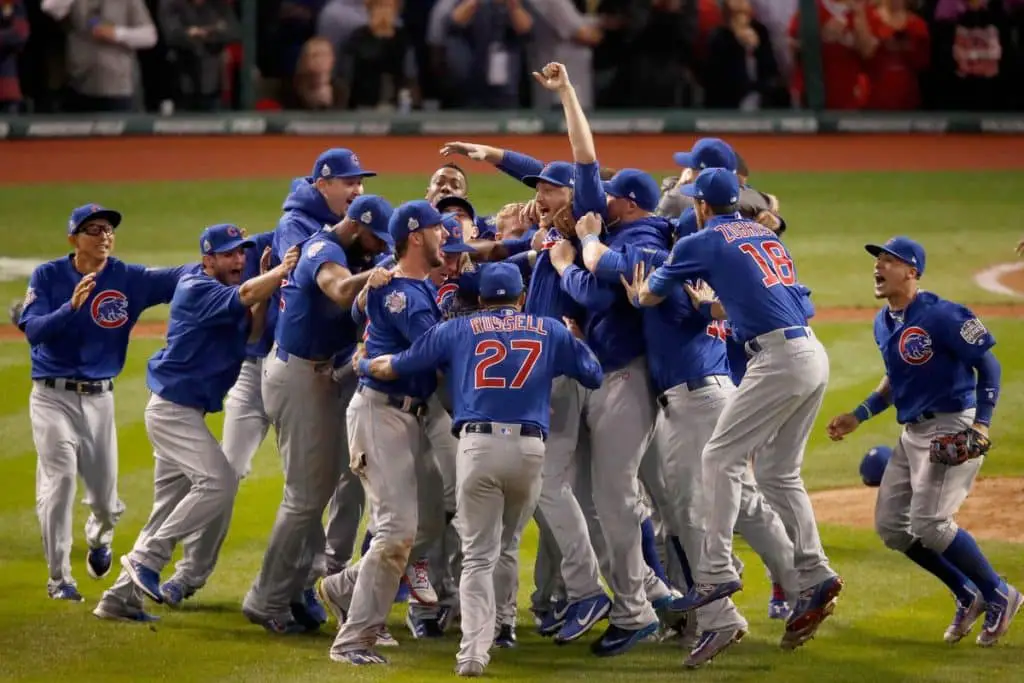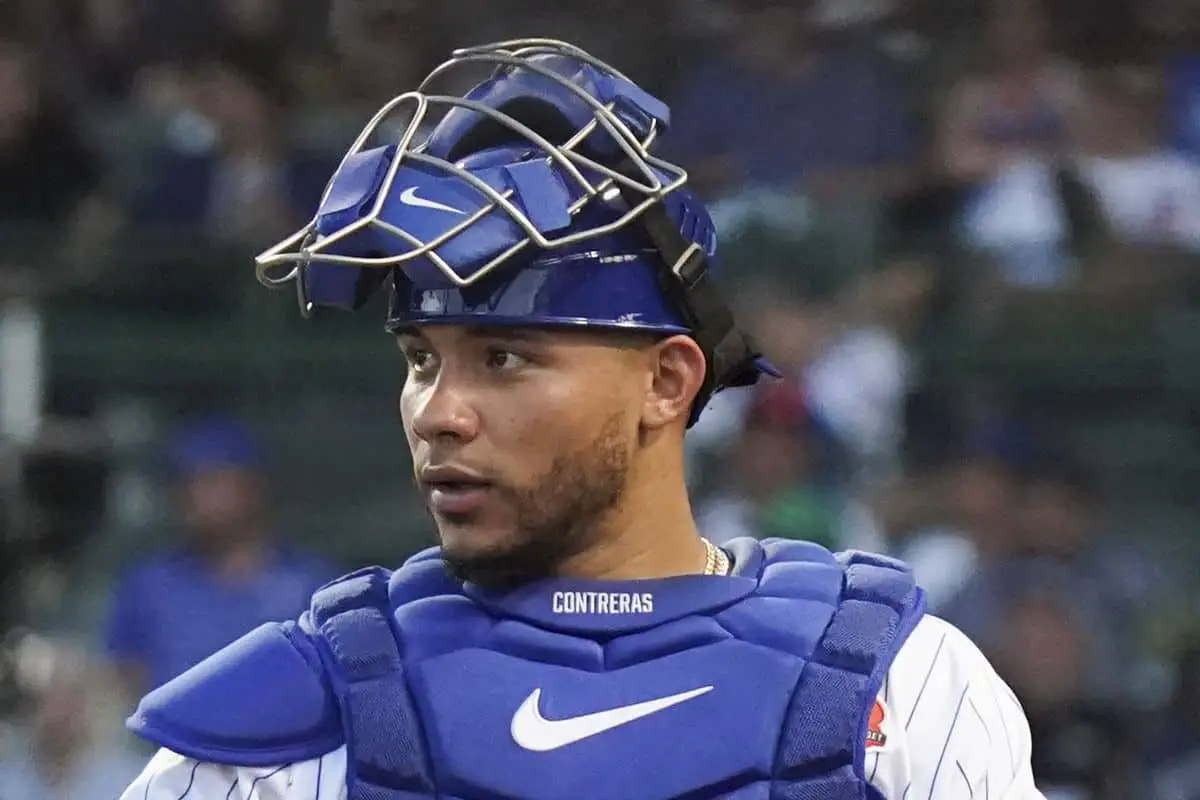What would the all decade Chicago Cubs roster look like based on a players best individual season between 2010 – 2021.
In a rebuilding season for one of the most popular teams in the league, it’s time to reminisce on when times were more enjoyable for the Chicago Cubs and their fans. In a decade of highs and lows, it was a decade of triumph in which the Cubs finally won the World Series in 2016. Having a plethora of talent come and go, there’s always questions of ‘what if’. What if the Cubs never traded their core of players? What if the pitching rotation stayed consistent after 2016? What if the offense never went flat? Cubs fans will always remember the good times and think about what could’ve been. In this scenario, let’s ask the questions what would the roster look like if it was comprised of the best statistical year of each player?
My criteria on this was simple put together the best possible lineup with the modern rules of today with a minimum number of plate appearance (250 PA) and games pitched (20 starts for starters and 35 games for relievers). Using a variety of sources in Fangraphs.com and BaseballReference.com, I was able to gather enough details to put together the best possible roster. Now it’s important to know that this is one person’s opinion and debate is encouraged, so let’s get started.
Catcher: Willson Contreras, 2019
- 105 G/409 PA, 98 H, 18 2B, 2 3B, 24 HR, 64 RBI, .272 Avg/.355 OBP/.533 SLG/.888 OPS, 3.1 WAR, 70 RC
Currently working on his best year of his career thus far, Willson Contreras put together a solid 2019 campaign where he started to be established as the future of the Cubs. Showing signs of power and shutting down the running game. Having his second all star appearance and displaying pop at plate, Contreras started finding his groove with team and started being a threat in the middle of their line-up.
Beating out former Cub Geovany Soto’s 2010 campaign by a small margin. While playing a similar amount of games, the offensive numbers were incredibly close with Contreras barely edging out Soto on runs created by a mere three runs (70-67). While there is no wrong answer between Contreras’ 2019 campaign and Soto’s 2010, Contreras gets the nod here as he was
2019 marked the best offensive season to date for Willson Contreras: https://t.co/Wfg0CUA3pL pic.twitter.com/sv8yPgptQs
— MLB Stats (@MLBStats) December 8, 2019
First Base: Anthony Rizzo, 2016
- 155 G/676 PA, 170 H, 43 2B, 4 3B, 32 HR, 109 RBI, .292 AVG/.385 OBP/.544 SLG/.928 OPS, 5.8 WAR, 122 RC
This might’ve been the easiest choice in terms of a player for a position. Anthony Rizzo was the heart and soul of the Chicago Cubs throughout his time wearing the Cubbie blue. Emerging as one of the leagues best left-handed hitters and defensive first baseman, Rizzo posted a career year in terms of stats and awards in 2016. Leading the Cubs to their first World Series title and catching the final out of the World Series it was only fitting that Rizzo would be the one to kick off the celebration.
During a career year, Rizzo received the starting nod at the 2016 All-Star Game for the National League, receiving the most fan votes. Not only swinging a hot bat, Rizzo also flashed the leather as he posted 11 defensive runs saved which lead the league for all first basemen, leading to him taking home the Platinum Glove Award. There’s no question that Rizzo was one of the most valuable parts for the Cubs during his tenure but his best statistical year in a Cubs uniform came with a lot of hardware and recognition in 2016.
5 years ago today Anthony Rizzo led the Chicago Cubs into Wrigley Field holding the World Series trophy. The #Cubs raised the 2016 World Series banner this night. pic.twitter.com/C8yFkGi8ip
— Cubs Zone ™️ (@CubsZone) April 10, 2022
Second Base: Javier Baez, 2018
- 160 G/645 PA, 176 H, 40 2B, 9 3B, 34 HR, 111 RBI, .290 AVG/.326 OBP/.554 SLG/.881 OPS, 6.4 WAR, 106 RC
“El Mago” was the clear cut choice at second base after an MVP caliber year from Javier Baez in 2018. The Puerto Rican native Baez became one of the most electric and must watch players in the game. Dazzling people with out of this world play on defense and all or nothing swing that makes the baseball fly all over the stadium, Baez broke out as a superstar during the 2018 campaign earning him his first All-Star selection being named the starting second baseman for the 2018 All Star Game.
Wrapping up the season on a high note Baez finished the campaign with a second place finish in the MVP race behind the Milwaukee Brewers LF Christian Yelich. Having played more games at 2B than at SS opened the door for Baez to be slated on this spot even though he could’ve easily been the shortstop on this scenario. That opens the door for a young dynamic shortstop to be added.
JAVIER BAEZ WITH 2 HOME RUNS 2 GAMES IN A ROW! #Cubs pic.twitter.com/PRqueWEt3P
— Aldo Soto (@AldoSoto21) April 12, 2018
Shortstop: Starlin Castro, 2011
- 158 G/715 PA, 207 H, 36 2B, 9 3B, 10 HR, 66 RBI, .307 AVG/.341 OBP/.432 SLG/.773 OPS, 3.2 WAR, 94 RC
Once considered the future of the Chicago Cubs, Starlin Castro had himself a career year in 2011 collecting a national league leading 207 hits while creating 94 runs. This might’ve been the toughest choice out of all positions to make considering the likes of Addison Russell and shifting Baez here and adding Ben Zobrist at second base. Going based on the title ‘Base on best statistical season’ it’s tough to not go with a hitter who was one of the few bright spots in a bottom of the barrel Cub team of 2011. Earning a spot in the 2011 All-Star Game and winning National League Player of the Week twice. At just 21 years old, Castro became the youngest player to lead a league in hits.
Hoy en 2011, Starlin Castro se convirtió en el jugador más joven en la historia de Cubs en conectar 200 hits.
Video: https://t.co/gtwrThEYiw pic.twitter.com/LviWiiEVkz— LasMayores (@LasMayores) September 23, 2016
Third Base: Kris Bryant, 2016
- 155 G/699 PA, 176 H, 35 2B, 3 3B, 39 HR, 102 RBI, .292 AVG/.385 OBP/.554 SLG/.939 OPS, 7.3 WAR, 135 RC
Bryant came in to the league and pretty much proved that he was one of the best hitters in the game in 2015. The sequel to said season has been the best of his career thus far. In 2016, Bryant became the first player in history to win the a Golden Spikes Award, a Baseball America Minor League Player of the Year Award, a Rookie of the Year Award and an MVP award in successive seasons. On top of that he became the sixth player to win Rookie of the Year and MVP within his first two seasons.
Adding to his accolades is being the starting third basemen in the 2016 All-Star Game, an squad that included the full starting infield with other Cubs players, Rizzo, Ben Zobrist (2B) and Addison Russell (SS). Bryant also led the league in Runs Scored (121) and Wins Above Replacement (7.7). Bryant also won the Hank Aaron award as the National League’s most outstanding hitter. Overall, this was a year full of hardware for Bryant and easily the best statistical year of his career.
OTD in 2015 the Cubs called up Kris Bryant. Here’s a throwback to the biggest home run he ever hit. Basically he saved the 2016 season. pic.twitter.com/wA2S5AiG9V
— This Day in Chicago Sports (@ChiSportsDay) April 17, 2020
Left Fielder: Kyle Schwarber, 2019
- 155 G/610 PA, 132 H, 29 2B, 3 3B, 38 HR, 92 RBI, .250 AVG/.339 OBP/.531 SLG/.871 OPS, 2.3 WAR, 98 RC
Kyle Schwarber has been one of the consistent power hitters in the game. Hitting moon shot after moon shot it was tough choice of whether his 2019 campaign was better than Alfonso Soriano’s 2012 campaign. The production was overall better and more consistent so he gets the nod here. While it wasn’t the greatest season it was still a productive one for Schwarber as he created 98 runs and hit 38 homeruns. His defense has always been a question mark but so was his counter part in Soriano, overall Schwarber had the better production despite having led the league in 2019 in errors for left fielders. Cub fans knew exactly what they had in Schwarber, what they were going to get on defense was a sacrifice the team was willing to make in order to have that bat in the lineup. Just in case you need a reminder just see the tweet below:
The @Cubs will preserve @kschwarb12's HR in a case atop the Wrigley Field scoreboard: http://t.co/Cr7T7VCIjA pic.twitter.com/heN1M56pe3
— Cut4 (@Cut4) October 14, 2015
Center Fielder: Dexter Fowler, 2016
- 125 G/551 PA, 126 H, 25 2B, 7 3B, 13 HR, 48 RBI, .276 AVG/.393 OBP/.447 SLG/.840 OPS, 4.0 WAR, 90 RC
“You go, we go” Fowler exemplified that as a Chicago Cub being the best leadoff hitter the Cubs had through the decade. Fowler posted a solid defensive front in Center Field and put up offensive numbers worthy of an All-Star selection in 2016. There was never a question whether or not Fowler would be the CF here, it was more of which of the two seasons would be the best. While it was close, the more consistently productive season was in 2016, his slash line was higher on all phases despite not having as high numbers. Overall, Fowler was a better more consistent player in 2016 and was pivotal part in that World Series team.
Right Fielder: Marlon Byrd, 2010
- 152 G/630 PA, 170 H, 39 2B, 2 3B, 12 HR, 66 RBI, .293 AVG/.346 OBP/.429 SLG/.775 OPS, 3.7 WAR, 86 RC
The award for the most random Cub on this list, will definitely go to Marlon Byrd. A journeyman across the league, Byrd put on 10 different uniforms throughout his 15 year career and his three year run with the Cubs saw him selected onto his only All-Star selection in 2010. Spending the year being a solid contact hitter Byrd posted a solid 3.7 WAR season. Mashing 39 doubles and creating 86 runs, Byrd gets the nod over Jason Heyward who never lived up to his massive contract. Byrd led the team in 2010 in most batting categories.
Remember when Marlon Byrd made the play of the game in his lone All-Star appearance in 2010?
He joins @leilarahimi & @OzzieGuillen for Baseball Night in Chicago at 6:30!
📺: NBC Sports Chicago
💻: https://t.co/AyNTatUBUy pic.twitter.com/Dd6Ovq3Cwn— NBC Sports Chicago (@NBCSChicago) May 22, 2018
Designated Hitter: Aramis Ramirez, 2011
- 149 G/626 PA, 173 H, 35 2B, 1 3B, 26 HR, 93 RBI, .306 AVG/.361 OBP/.510 SLG/.871 OPS, 2.8 WAR, 104 RC
One of the best pure hitters in Cubs history, Aramis Ramirez posted a solid 2011 campaign at the plate. Constantly finding the gaps in the outfield and putting the ball in play, Ramirez drove in 93 runs and overall created 104 runs in his last season as a Chicago Cub. Winning a silver slugger award at 3B, Ramirez gets the DH spot as there’s a 2016 MVP that had a better season in this scenario. Either way Ramirez raked in 2011 and is deserving of being the DH for this lineup.
Also #OTD in 2011, Aramis Ramírez and @Plakata hit two home runs each as the #Cubs beat the Rockies 7-3. @WatchMarquee pic.twitter.com/oLhTOwJjJe
— Andy Martínez (@amartinez_11) June 27, 2020
Starting Pitcher: Jake Arrieta, 2015
- 33 G/33 GS, 229 IP, 22-6, 1.77 ERA, 236 SO, 48 BB, 2.35 FIP, .865 WHIP, 8.3 WAR
If you ever want to take a look at what a pitcher going god mode looks like then look no further than Jake Arrieta’s 2015 campaign. Becoming basically unhittable throughout the season, Arrieta posted a league leading 22 win season and three complete game shutout which included a no-hitter vs the Los Angeles Dodgers. After the All-Star break, Arrieta posted a 0.75 ERA in 15 starts which is the lowest in MLB history. Winning NL Pitcher of the Month twice, Arrieta led the Cubs into a Wild Card game vs the Pittsburgh Pirates in which he threw a complete game gem with 11 strikeouts. After the season, Jake Arrieta was named the NL Cy Young award winner, the first Cub to do so since Greg Maddux in 1992.
83 seconds of Jake Arrieta being the Filthiest Pitcher on the Planet (no-hitter/2015). 😯 pic.twitter.com/pilMR7bN0j
— Rob Friedman (@PitchingNinja) February 4, 2020
Starting Pitcher: Jon Lester, 2016
- 32 G/32 GS, 202.2 IP, 19-5, 2.44 ERA, 197 SO, 52 BB, 3.41 FIP. 1.016 WHIP, 5.6 WAR
Consistency was always something you would get form a starter like Jon Lester. Being the free agent signing that kickstarted the Cubs run at the top of baseball, Lester posting arguably his best season to date in 2016. Finishing 2nd in the Cy Young race behind Washington Nationals pitcher Max Scherzer, Lester posted a 19-5 record and a 2.44 ERA. Fanning 197 hitters Lester led the charge for the Cubs in 2016 and proceeded to win NLCS MVP and pitching 14.2 innings in the World Series.
4 years ago today, Jon Lester & the Cubs dominated the Dodgers in Game 5 of the 2016 NLCS to become one win away from their first World Series since 1945. 🐻 pic.twitter.com/J7SUTOlMm8
— Cubs Zone ™️ (@CubsZone) October 20, 2020
Starting Pitcher: Kyle Hendricks, 2016
- 31 G/30 GS, 190 IP, 16-8, 2.13 ERA, 170 SO, 44 BB, 3.20 FIP, .979 WHIP, 5.4 WAR
“The Professor” Kyle Hendricks became a household name in Chicago thanks to his stellar 2016 season. Posting a league leading 2.13 ERA in 31 starts, Hendricks kept hitters off-balance with his constantly moving assortment of breaking pitches. Hendricks finished 3rd in the Cy Young race behind Lester and Scherzer in 2016, and even received some votes in the NL MVP race. Starting game 7 for the Chicago Cubs in the World Series, Hendricks was the third starter in the Cubs three headed monster at the top of the rotation.
Kyle Hendricks led @MLB with a 2.13 ERA in 2016.
Then he posted a cool 1.42 ERA in the postseason. pic.twitter.com/kyDqJg9Dof
— Chicago Cubs (@Cubs) April 1, 2020
Starting Pitcher: Ryan Dempster, 2010
- 34 G/34 GS, 215.1 IP, 15-12, 3.85 ERA, 208 SO, 86 BB, 3.99 FIP, 1.319 WHIP, 2.7 WAR
Slowly approaching the twilight of his career, Ryan Dempster became the Cubs ace while they started to rebuild in the early 2010s. Being a mentor to the young arms, Dempster had a solid 2010 campaign in which he led the league in games started and led the team in most pitching categories. Dempster always had the stuff to get hitters to swing and miss and in 2010 it was no different as struck out 208 hitters out of 918 faced for 22% strikeout rate. Still a fan favorite to this day, Dempster was always a player that bled cubbie blue and the fans shared that same appreciation back through the tough rebuilding years.
Starting Pitcher: Matt Garza, 2011
- 31 G/31 GS, 198 IP, 10-10, 3.32 ERA, 197 SO, 63 BB, 2.95 FIP, 1.258 WHIP, 2.7 WAR
Matt Garza’s first year with the Cubs was an interesting one. Signing as a free agent after three solid seasons with the Tampa Bay Ray, Garza came into a rebuilding Chicago squad. Posting a 10 win season, striking out 197 batters in 198 innings. Showing abilities to get hitters out Garza also posted a 3.32 ERA and an FIP of 2.95. Now when Garza left town it wasn’t the most graceful, as fans came to have a competitive dislike and Garza returned it when he pitched for the Brewers. That still doesn’t take away from Garza having a solid 2011 campaign.
Chicago Cubs Final Lineup:
| Lineup | Position |
| 1. Dexter Fowler | 8 |
| 2. Kris Bryant | 5 |
| 3. Anthony Rizzo | 3 |
| 4. Aramis Ramirez | DH |
| 5. Javier Baez | 4 |
| 6. Willson Contreras | 2 |
| 7. Kyle Schwarber | 7 |
| 8. Starlin Castro | 6 |
| 9. Marlon Byrd | 9 |
Chicago Cubs Bench:
| Alfonso Soriano | 2012 | OF |
| Ben Zobrist | 2011 | 2B |
| Patrick Wisdom | 2021 | 3B |
| Jason Heyward | 2016 | RF |
| Ian Happ | 2021 | 2B/OF |
| Geovany Soto | 2010 | C |
Chicago Cubs Rotation:
| Rotation | Year | Bullpen | Year | Pos |
| 1. Jake Arrieta | 2015 | Steve Cishek | 2018 | MR |
| 2. Jon Lester | 2016 | Pedro Strop | 2014 | MR |
| 3. Kyle Hendricks | 2016 | Mike Montgomery | 2017 | LHP |
| 4. Ryan Dempster | 2010 | Sean Marshall | 2011 | SU |
| 5. Matt Garza | 2011 | Hector Rondon | 2015 | CP |
Probably noticed that most of the players on this list are from 2016, and there’s a big reason for that. The 2016 World Series was a team where almost everything clicked. The pitching staff was on point, defense was shut down and it was considered a stacked lineup top to bottom. Now you can definitely interchange some players, like Soriano for Schwarber, or Russell for Castro, but the main factor at the end of the day was production with bat.
The Chicago Cubs like most teams saw a lot of ups and downs throughout the decade. Though this could be considered as the most successful decade in Chicago Cubs history, there’s a lot to look back on and fond memories in terms of players and moments. Now that this era of the Chicago Cubs is behind us, it’s never a bad idea to look back and ask the question what if? Would this team win a world series against another teams best statistical lineup? Different answers can be made but as for Cubs fans at least it’s not a bitter question to answer thanks to 2016.
Do you agree with the lineup? Is there anything that you would change? These types of articles are used to spark debates and if being a Chicago Sports fans has taught us anything is that everyone in the state is up for a good ole fashion sports debate.
For More Great Chicago Sports Content
Get the latest Chicago sports news, analysis, and breaking stories on the Bears, Bulls, Blackhawks, Cubs, White Sox, Sky, and more! Tap the star to add us to your favorites on Google News, so you never miss a story on your favorite Chicago teams.
Follow us on Twitter at @chicitysports23 for more great content. We appreciate you taking time to read our articles. To interact more with our community and keep up to date on the latest in Chicago sports news, JOIN OUR FREE FACEBOOK GROUP by CLICKING HERE




